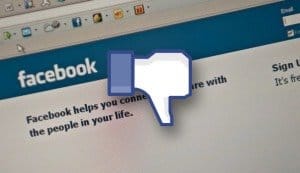 Written by ContentPowered.com
Written by ContentPowered.com
In the days of yore, when Facebook was but a newcomer to the world of online marketing, businesses were hesitant in their use of the platform. There was little to show from posting, little benefit to be had in a tangible, SEO sense. Then people began to realize the social benefits of the various metrics on a given Facebook post or account.
Follower counts began to represent popularity, with higher counts attracting more users. Comments indicated popularity of a post, keeping users active and around to be exposed to marketing calls. And likes… Likes were badges of honor. A post with more likes than another was the most popular and useful of the two. Beyond that, high like counts indicated a high level of trust from users.
Gaming the System
What happened next was predictable to anyone with a history or passing knowledge of SEO. Webmasters saw how valuable likes on their pages and posts were, so they bought likes. Often those likes came from accounts mass-produced by robots or by cheaply hired labor in India. Unfortunately, while those likes gave you larger numbers on your page, they didn’t do anything else. Robots don’t comment on posts. Robots don’t buy your products. Maybe they’d click through to your website, but that doesn’t earn you any benefit either.
Of course, Facebook also detects and removes fraudulent likes, both from bot accounts and from paid like campaigns. It may not be easy to look at your pool of followers and determine which are bots, but Facebook can look and see when a site suddenly gets 10,000 likes all from a certain pool of users, who then all go and like another page unrelated to the first, there’s probably something tricky going on.
Social Exposure
On Facebook today, there’s an incredible amount of competition for attention. It’s not like other sites, where you may compete against other similar YouTube channels, or similar blog posts in the Google search results. There’s no filtering. Users see a feed of recent activity by everyone they follow and friend. There’s no “activity by businesses” tab to click to, where they can see more focused content.
Yet the volume of activity that goes on every day is immense. An average user with 100-200 friends has so much activity going on that keeping up with it could be a full time job. As a business, you’re competing not just with other businesses for their attention, but with their family and friends.
The current way Facebook works is through their EdgeRank algorithm, which analyzes the relationship between two accounts. It’s a bit more complex than this but, basically, the more interaction there is between two accounts, the more those posts will show up with each account.
What that means is that a user who likes your page is going to see more of your posts than a user who doesn’t. A user who likes your posts with regularity will see more than the user who just follows your page. The user who comments on your posts and likes them will see even more. It’s a sliding scale of engagement, where more is better.
In a sense, it still encourages likes, though not for the same reason. Your page having 10,000 likes isn’t going to make it show up much more than a page with 1,000 likes, not if those additional 9,000 likes are from profiles that don’t comment or engage with your posts.
Too Much, Too Fast
So, the original question is; is it a bad thing to pull in too many likes too quickly? Taking what you know from above, you can guess that the answer is probably yes. This has a few reasons.
- An incoming swarm of likes without a gradual buildup and trailing decrease looks unnatural. This can lead Facebook to audit your followers for bots and paid likes, and remove them.
- Like volume doesn’t help; like quality does. If you’re suddenly seeing hundreds of new likes per day when you only had a few before, those users are probably not the sort to stick around and engage on a regular basis. Sooner or later they’ll no longer see your posts.
Then again, there’s no actual penalty for pulling in likes too fast, at least as far as public knowledge goes.
Legitimate Sources
The source of your sudden stream of likes is the deciding factor for whether or not they’re going to do you good or harm over time.
If you went to Fiverr or some other site and you spend $10 on a couple thousand likes, you’re not getting anything of value. No one can organically find thousands of people who will like your page and provide value so easily that they charge such low rates. Any legitimate source of “buying” likes isn’t really buying likes at all; it’s buying an ad campaign to bring in interested users.
If, on the other hand, you’ve just started an effective ad campaign targeting a new audience segment, you’re likely to pull in a large number of likes from a group you previously had little interaction with. This can be useful; the likes are from genuine engagement, after all. Those people may very well continue to interact with your page, increase their engagement, see your posts more often and generally benefit your page and your bottom line.
The third scenario is a common one that should set your mind at ease. Imagine the typical Facebook contest. What’s the first thing a user is generally asked to do? Like your page. In fact, it’s a prerequisite for taking part in the contest at all. This means that running a contest is very likely to bring in a sudden influx of new likes. Those likes are perfectly legitimate and won’t get you in trouble; if they did, contests wouldn’t be such a popular way of increasing engagement on Facebook.
Fixing the Hole
Unfortunately, if you have purchased likes in the past, you’re diluting your userbase and you’re hurting yourself. You can remove invalid likes, but there’s no easy way to do it. You need to go into the manage likes dialogue in your admin analytics, where you’re presented with a list of people liking your page. You can choose to remove them from your page there. The downside is that it takes a long time and there’s no mass removal tool; all you can do is investigate and remove followers one by one.


